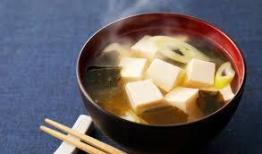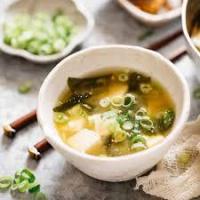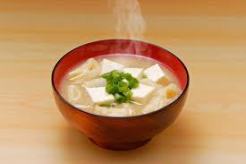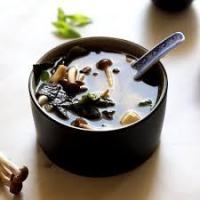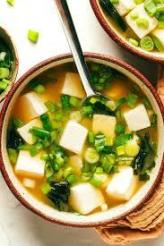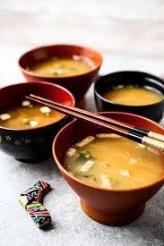Sashimi Delights: A Culinary Journey Through Japan
The Art of Sashimi: Understanding the Basics
Sashimi is a quintessential component of Japanese cuisine, characterized by its simplicity and emphasis on high-quality ingredients. Defined as thinly sliced raw fish or seafood, sashimi serves as a central element in many Japanese meals, often accompanied by condiments such as soy sauce, wasabi, and pickled ginger. Unlike sushi, which includes vinegared rice, sashimi is served without any accompanying grain, highlighting the natural flavors and freshness of the protein itself. This distinction marks the two dishes as complementary rather than interchangeable, underpinning the intricate culinary culture of Japan.
One of the most critical factors in producing exceptional sashimi is the use of the freshest and highest quality ingredients. The choice of seafood is paramount, with fish like tuna, salmon, and mackerel being particularly popular choices. The preparation of sashimi involves not only the selection of fish but also the method of slicing. Chefs utilize specialized knives and techniques to ensure each slice accentuates the texture and flavor of the fish, demonstrating the skill and precision associated with Japanese culinary traditions.
Regional variations in sashimi can also offer rich insights into local culinary practices. For instance, in coastal regions, the availability of fresh catch influences the types of sashimi served. Furthermore, specific areas might employ unique sauces or garnishes that reflect their cultural identities. The artistry of sashimi preparation is not merely about aesthetics; it embodies the Japanese philosophy of respecting ingredients and enhancing their inherent qualities. As such, sashimi is not only a dish but an expression of the harmonious relationship between nature and culinary practice.
Types of Sashimi: An Overview of Popular Varieties
Sashimi, a quintessential component of Japanese cuisine, showcases a variety of fish and seafood that are typically served raw. Each type offers unique flavors, textures, and suggests distinct ways to enhance the dining experience. One of the most popular sashimi varieties is tuna, particularly the fatty cuts known as toro. This sashimi possesses a rich, buttery texture and is often complemented with soy sauce and wasabi, enhancing its umami profile.
Another staple in the world of sashimi is salmon. Recognized for its tender flesh and vibrant color, salmon sashimi delivers a slightly sweet flavor. It is frequently enjoyed with a squeeze of lemon and a side of ponzu sauce, which adds a zesty tang, elevating the overall taste. Mackerel sashimi, known as saba, is another noteworthy option, prized for its stronger flavor and oily texture. This variety is commonly served with a dash of rice vinegar, which cuts through its richness, creating a balanced palate.
For the more adventurous eater, sashimi selections can extend to exotic offerings such as octopus, or tako, which offers a subtle sweetness and a firm bite. Often paired with a sesame-based dipping sauce, it creates a delightful combination. Sea urchin, or uni, represents another gourmet choice, celebrated for its creamy texture and briny flavor. Diners typically enjoy uni sashimi with a hint of soy sauce, which enhances its marine essence. Other popular types include yellowtail, scallops, and squid, each providing a distinct culinary experience. When indulging in sashimi, it is common to include garnishes like shiso leaves and daikon radish, which add freshness and texture, completing this delectable Japanese dish.
The Sashimi Experience: Dining Etiquette and Pairings
Experiencing sashimi goes beyond simply consuming this exquisite dish; it entails embracing the cultural norms and dining etiquette associated with it. Sashimi, which consists of thinly sliced raw fish, is traditionally served without rice and is meant to highlight the freshness and quality of the ingredients. Proper etiquette dictates that diners should appreciate the visual presentation before indulging in the dish, allowing the colors and textures to set the stage for the forthcoming culinary adventure.
When it comes to enhancing the flavor of sashimi, the correct use of wasabi and soy sauce is crucial. Diners are encouraged to dab a small amount of wasabi on the sashimi piece rather than mixing it directly into the soy sauce, as this preserves the delicate balance of flavors and respects the chef's selection. A dip of the sashimi into soy sauce should be done gently, avoiding excessive amounts that may overpower the fresh taste of the fish. Additionally, some sashimi may come with garnishes like shiso leaves or daikon radish, which contribute to the overall flavor and should be tasted alongside the fish.
To further elevate the dining experience, suitable beverage pairings are essential. Traditionally, sake is a popular choice as it beautifully complements the subtle flavors of sashimi. There are various types of sake, such as junmai and ginjo, each offering unique notes that can enhance the tasting experience. Alternatively, green tea serves as a refreshing accompaniment, providing a cleansing quality that prepares the palate for each new piece of sashimi. By understanding and respecting these dining customs, individuals can fully immerse themselves in the authentic sashimi experience, allowing for a deeper appreciation of this culinary art form. Understanding these elements will undoubtedly enrich one's palate and elevate the enjoyment of sashimi within the context of Japanese cuisine.
Sashimi Beyond Japan: Global Influences and Innovations
Sashimi, a traditional Japanese delicacy, has recently gained significance in culinary cultures worldwide, leading to diverse interpretations that reflect local flavors and creative innovations. This evolution illustrates how this dish, originally rooted in Japan, has made its mark across various gastronomic landscapes. Chefs globally are reimagining sashimi, incorporating indigenous ingredients while respecting the essence of the original preparation.
In many Asian countries, sashimi has sparked a fusion of flavors that blends local preferences with classic Japanese techniques. For instance, in regions such as Southeast Asia, chefs may incorporate tropical fruits or spicy sauces, adding depth and complexity to the sashimi experience. These variations showcase how traditional methods are adaptable, allowing sashimi to resonate with local palates without losing its core identity.
Moreover, in Western cuisines, there has been a rise in the popularity of sashimi bars, where diners can explore an assortment of fresh offerings beyond the conventional. Creative presentations that include vibrant garnishes and unique pairings have emerged, showcasing the versatility of sashimi. Chefs experiment with elements such as flavored oils or infusion techniques, transforming the dish into a contemporary culinary experience while staying true to its roots.
The rise of sushi and sashimi’s influence on global dining trends has led to the exploration of artistic plating and innovative combinations. Culinary enthusiasts appreciate these modern adaptations, which incorporate elements such as microgreens or edible flowers, enhancing the visual appeal of sashimi. This commitment to presentation reinforces sashimi’s reputation as not just a food item, but also a form of art, showcasing the skill of the chefs behind it.
Ultimately, the global evolution of sashimi reflects a broader dialogue among culinary traditions, demonstrating the rich exchange that occurs when cultures meet. As chefs continue to redefine and innovate, the essence of sashimi remains, binding together its Japanese heritage with a myriad of global influences.

